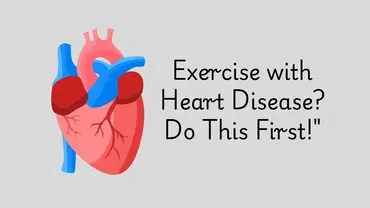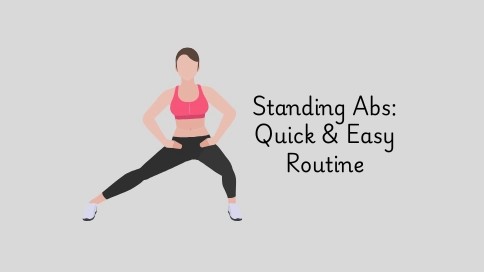Safe Workouts for Heart Patients: 12 Vital Exercise Precautions You Must Follow
Exercise is a cornerstone of a healthy lifestyle—but when you have heart disease, it’s not as simple as lacing up your sneakers and going for a run. People with heart conditions must take special precautions to ensure their workouts improve cardiovascular health without putting extra strain on the heart.
In this blog, we will break down the essential safety measures heart patients must follow while exercising, recommended activities, and red flags to watch for, so you can move more and worry less.
Why Exercise is Important for People with Heart Disease
People often think heart patients should avoid physical activity, but the truth is quite the opposite. Regular, gentle exercise can:
Strengthen the heart muscle
Improve circulation
Reduce blood pressure
Boost mood and reduce stress
Help with weight control
Improve cholesterol levels
However, if not done properly, exercise can trigger complications like arrhythmia, chest pain, or even cardiac events. That’s why taking precautions is absolutely essential.
12 Precautions to Take Before and During Exercise with Heart Disease
1. Consult Your Cardiologist First
Before beginning any exercise routine, always consult your doctor. They may recommend a stress test or an echocardiogram to assess how your heart responds to physical activity. Your cardiologist can also create a safe and effective exercise plan tailored to your condition.
2. Know Your Limits
People with heart disease should start slow and build gradually. Avoid high-intensity workouts unless specifically cleared by a doctor. Overexertion can increase heart rate and blood pressure too rapidly.
3. Choose the Right Type of Exercise
The best types of exercise for heart patients include:
Walking
Cycling (stationary or slow-paced)
Swimming
Tai chi or gentle yoga
Light resistance training
Avoid heavy weightlifting, sprinting, or competitive sports unless advised otherwise.
4. Warm Up and Cool Down Properly
Skipping warm-ups or cool-downs can be dangerous. Gradually raise your heart rate with a 5–10 minute warm-up (like slow walking or gentle stretches). After exercising, cool down for 5–10 minutes to prevent a sudden drop in blood pressure.
5. Monitor Your Heart Rate
Use a heart rate monitor or smartwatch to keep track. Your doctor can help calculate your target heart rate zone. A general rule: you should be able to talk while exercising—if you’re too breathless to speak, you’re pushing too hard.
6. Stay Hydrated and Avoid Extreme Temperatures
Dehydration and overheating can put strain on the cardiovascular system. Avoid exercising in hot, humid, or extremely cold conditions. Opt for indoor environments or cooler times of day.
7. Avoid Exercising Right After Meals
Give yourself 1–2 hours after eating before engaging in physical activity. Exercising on a full stomach can divert blood away from your heart and toward digestion, increasing the risk of complications.
8. Watch for Warning Signs
Stop exercising immediately if you feel:
Chest pain or tightness
Dizziness or fainting
Shortness of breath
Irregular heartbeat
Cold sweat or nausea
These can be signs of angina or other cardiac issues. Seek immediate medical help if symptoms persist.
9. Avoid Straining or Holding Your Breath
During strength exercises, exhale during exertion and inhale when relaxing. Holding your breath can spike blood pressure and lead to arrhythmias—a condition known as the Valsalva effect.
10. Skip the High-Intensity Trends
Avoid HIIT (high-intensity interval training), boot camps, or CrossFit unless explicitly approved. These can cause dramatic heart rate increases and should be reserved only for those with a strong cardiac foundation and medical clearance.
11. Use the RPE Scale (Rate of Perceived Exertion)
The RPE scale ranges from 1 (very light effort) to 10 (maximum effort). Heart patients should aim for a moderate intensity—around 3–4 on the scale—unless otherwise advised.
12. Stay Consistent but Flexible
Exercise 4–5 days a week for 30 minutes, if possible. But listen to your body: if you're feeling unwell or overly fatigued, take a rest day. Consistency is good, but forcing a workout isn't worth the risk.
What Exercises Should Heart Patients Avoid?
While gentle activity is beneficial, certain exercises can pose dangers:
Heavy weightlifting: Increases blood pressure
Isometric exercises: Holding a position (like planks) can strain the heart
Competitive sports: Often high pressure and intensity
Sudden bursts of activity: Sprints or abrupt uphill climbs
Always modify workouts to avoid these risks or replace them with lower-impact alternatives.
Special Considerations by Condition
If You Have Heart Failure:
Stick to low-impact, short-duration exercises with frequent rest periods. Avoid lying flat during workouts, which can worsen symptoms.
If You’ve Had a Heart Attack:
Follow a cardiac rehab program if available. It's a supervised way to safely rebuild your heart health.
If You Have Arrhythmia:
Avoid stimulants like caffeine before exercise and be cautious with activities that spike heart rate.
Final Thoughts
Exercise can be life-changing for heart patients—but it must be approached with caution and awareness. With the right guidance and a tailored plan, you can safely stay active and even improve your heart condition over time.
Remember: Always follow your doctor’s advice, and never ignore warning signs.
FAQ Section
1. Can heart patients do cardio workouts?
Yes, but only low to moderate intensity cardio such as walking, cycling, or swimming. Always consult your cardiologist before starting.
2. How much should someone with heart disease exercise per week?
Aim for at least 150 minutes per week of moderate-intensity activity, broken into manageable sessions, as advised by your doctor.
3. What is the best time of day for heart patients to exercise?
Morning or early evening is ideal, avoiding high temperatures. Also, avoid exercising right after meals or when feeling fatigued.
4. Can exercise reverse heart disease?
While exercise alone may not reverse heart disease, it can improve symptoms, strengthen the heart, and reduce risk factors like high blood pressure and cholesterol.
5. Is strength training safe for heart patients?
Yes—with limitations. Use light weights, avoid breath-holding, and perform slow, controlled movements. Avoid heavy lifting unless cleared by a cardiologist.






No comments yet. Be the first to comment!